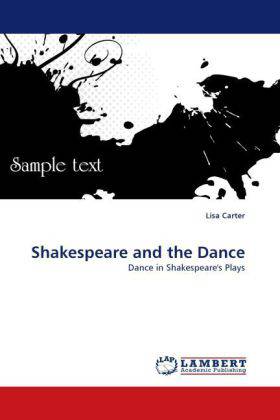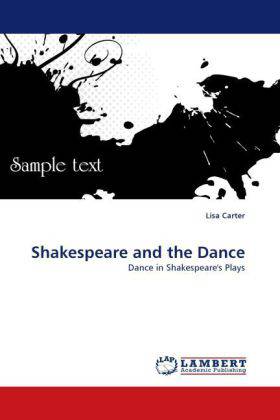
- Afhalen na 1 uur in een winkel met voorraad
- Gratis thuislevering in België vanaf € 30
- Ruim aanbod met 7 miljoen producten
- Afhalen na 1 uur in een winkel met voorraad
- Gratis thuislevering in België vanaf € 30
- Ruim aanbod met 7 miljoen producten
Zoeken
€ 70,45
+ 140 punten
Omschrijving
Shakespeare's plays are to be seen all over the world in any major repertory company. While much has been written on every aspect of the staging of his plays by Shakespearean scholars, actors and directors, the dancing has over time become less and less important almost to the point of obsolescence. While this trend is certainly not acceptable to me (and probably would not be to Mr. Shakespeare either were he alive today), directors when asked about the reason for there being no dance in the play lamely point to a lack of clear guidance from Shakespeare in his scripts as well as to rehearsal time constraints to teach the required period dances. My thesis will endeavor to show that a lack of dance in Shakespeare's plays is not only historically incorrect but also robs the modern day audience of the full spectacle of the occasion that defined that historical period. There are many resources available to directors should they be willing to commit to a wholly accurate reading of the play because a Shakespearean drama without the dance is, to my mind, hardly Shakespeare at all.
Specificaties
Betrokkenen
- Auteur(s):
- Uitgeverij:
Inhoud
- Aantal bladzijden:
- 52
- Taal:
- Engels
Eigenschappen
- Productcode (EAN):
- 9783844331141
- Verschijningsdatum:
- 22/04/2011
- Uitvoering:
- Paperback
- Afmetingen:
- 152 mm x 229 mm
- Gewicht:
- 91 g

Alleen bij Standaard Boekhandel
+ 140 punten op je klantenkaart van Standaard Boekhandel
Beoordelingen
We publiceren alleen reviews die voldoen aan de voorwaarden voor reviews. Bekijk onze voorwaarden voor reviews.








